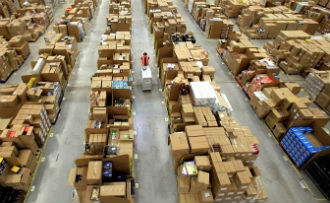 Continued uncertainty surrounding Brexit is causing widespread pressure on warehouse space as businesses stockpile to mitigate supply risks. But a data process expert believes simple maths can help companies reduce stock, making space for Brexit risk mitigations.
Continued uncertainty surrounding Brexit is causing widespread pressure on warehouse space as businesses stockpile to mitigate supply risks. But a data process expert believes simple maths can help companies reduce stock, making space for Brexit risk mitigations.
In a post-Brexit environment, it will also make stock management leaner, releasing cash and warehouse space on business as usual stock.
Matt Allison, founder and MD of Vensis is challenging businesses to think differently about the planning process.
It’s part of Allison’s lean data approach and follows repeated warnings from the United Kingdom Warehousing Association (UKWA) about the squeeze on space as companies seek to hold more inventory in their supply chain.
Allison said: “Most operational planning will schedule manufacturing based on the number of weeks of stock or similar. This is a common practice, but in many cases is flawed. Consider the make-to-stock of two products. One has regular demand of precisely the same volume each week. Stock levels will be very predictable. Theoretically, carrying stock on this product is not necessary.”
He said another product may have wildly varying demand; to maintain customer service levels stock is required and this means that using the volume-based planning process for make-to-stock, will tend to cause high stock levels of high-volume products despite its predictability.
“Moving to a variability-based planning model means stock is carried only to buffer unpredictable demand. This will free space and cash to allow businesses to respond to the current uncertainty leaving them stronger in the long term. The maths required to deploy the variability-based model is relatively simple,” said Allison said.
“The variation of demand is measured product by product to establish a standard deviation. A target service level is used to calculate the number of standard deviations of stock required product by product. The same technique is carried through from finished goods to raw materials to further leverage the technique.”





